
Discover the Most Vibrant and Unique Tri Color Succulent Varieties

Succulents have become incredibly popular in recent years due to their unique appearance and low maintenance requirements. One particular type of succulent that has gained a lot of attention is the tri color succulent. These succulents are known for their striking colors and patterns, making them a beautiful addition to any indoor or outdoor garden.
We will explore the world of tri color succulents and discover some of the most vibrant and unique varieties available. We will discuss the characteristics that make these succulents so special, including their color patterns, growth habits, and care requirements. Additionally, we will provide tips on how to care for and propagate tri color succulents, so you can enjoy their beauty for years to come. Whether you're a seasoned succulent enthusiast or just starting your collection, this article will provide you with valuable information on tri color succulents.
- Explore a wide range of tri color succulent varieties to add a unique touch to your garden
- Create a vibrant and eye-catching succulent display with tri color varieties
- Find the perfect tri color succulent to complement your existing plant collection
- Enjoy the dynamic and ever-changing colors of tri color succulents
- Add a pop of color to your indoor or outdoor space with tri color succulent plants
- Experiment with different tri color succulent varieties to create visually stunning arrangements
- Discover the beauty and diversity of tri color succulents from around the world
- Bring a touch of nature indoors with a tri color succulent as a houseplant
- Start a collection of tri color succulents for a striking and unique garden display
- Showcase your creativity by designing a succulent garden featuring tri color varieties
- Frequently Asked Questions
Explore a wide range of tri color succulent varieties to add a unique touch to your garden
Tri color succulents are a captivating addition to any garden or indoor space. With their eye-catching foliage and vibrant colors, these succulents can instantly elevate the aesthetic appeal of your surroundings. Whether you are an experienced gardener or a beginner, tri color succulents are relatively easy to care for and can thrive in various environments.
What are tri color succulents?
Tri color succulents, as the name suggests, are succulent plants that exhibit three different colors on their leaves. These colors can range from shades of green, pink, purple, yellow, and even red. The combination of these colors creates a mesmerizing and unique appearance that sets tri color succulents apart from other varieties.
Popular tri color succulent varieties
 The Prolific Succulent World: A Guide to its 'Mother of Many' Species
The Prolific Succulent World: A Guide to its 'Mother of Many' Species- Echeveria 'Perle von Nurnberg': This popular tri color succulent features rosettes with a stunning blend of lavender, pink, and blue hues. It requires bright sunlight and well-draining soil to thrive.
- Graptosedum 'California Sunset': With its striking pink, orange, and yellow foliage, this tri color succulent adds a sunset-like glow to any garden. It prefers partial sun and regular watering.
- Crassula ovata 'Sunset': This tri color succulent displays a combination of green, yellow, and pink hues. It is a low-maintenance plant that can tolerate various light conditions.
- Sedum 'Golden Glow': Known for its golden-yellow, green, and red leaves, this tri color succulent is a great choice for adding a pop of color to your garden. It thrives in full sun and well-draining soil.
Caring for tri color succulents
Proper care is essential to ensure the health and vitality of your tri color succulents. Here are some tips to keep in mind:
- Light: Most tri color succulents require bright, indirect sunlight. Place them in a location where they receive at least 4-6 hours of sunlight per day.
- Watering: Avoid overwatering your tri color succulents as they are prone to root rot. Water them thoroughly when the soil is completely dry and allow the excess water to drain out.
- Soil: Use well-draining soil specifically formulated for succulents. This type of soil prevents waterlogging and promotes healthy root growth.
- Temperature: Tri color succulents thrive in temperatures between 60-80°F (15-27°C). Protect them from extreme heat or cold, as it can damage their delicate foliage.
- Propagation: Tri color succulents can be propagated through leaf cuttings or offsets. Simply remove a healthy leaf or offset, let it dry for a few days, and then plant it in well-draining soil.
By following these care guidelines, you can enjoy the beauty of tri color succulents in your garden or indoor space for years to come. Their unique foliage and vibrant colors are sure to impress anyone who lays eyes on them.
Create a vibrant and eye-catching succulent display with tri color varieties
If you're looking to add some color and uniqueness to your succulent collection, tri color varieties are the way to go. These stunning succulents feature leaves with three distinct colors, adding a vibrant and eye-catching element to any display.
Tri color succulents come in a wide range of shapes and sizes, making it easy to find the perfect one to fit your personal style and preferences. Whether you prefer compact rosettes or trailing vines, there's a tri color succulent that will suit your needs.
Why choose tri color succulents?
Tri color succulents are not only visually appealing, but they also offer a unique twist to traditional succulent arrangements. The combination of three colors on each leaf creates a stunning contrast that is sure to grab attention.
Furthermore, tri color succulents are relatively easy to care for, making them perfect for both beginners and experienced plant enthusiasts. They require similar care to other succulents, needing well-draining soil, moderate sunlight, and infrequent watering.
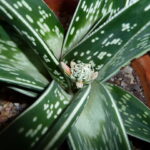 Guide to Aloe Family Diversity: Types of Succulents
Guide to Aloe Family Diversity: Types of SucculentsPopular tri color succulent varieties
There are numerous tri color succulent varieties available, each with its own distinct characteristics. Here are some popular ones to consider for your succulent collection:
- Echeveria 'Perle von Nurnberg': This stunning rosette-shaped succulent features pale purple leaves with pink edges and a dusty coating, creating an ethereal look.
- Crassula 'Campfire': With its vibrant orange, red, and green leaves, this compact succulent resembles a flickering flame, hence its name.
- Haworthia 'Lime Green': This tri color succulent stands out with its lime green, white, and translucent leaves, giving it a unique and refreshing appearance.
- Sedum 'Goldilocks': With its yellow, green, and pink foliage, this trailing succulent adds a pop of color and texture to hanging baskets or cascading displays.
These are just a few examples of the many tri color succulent varieties available. Feel free to explore and experiment with different combinations to create your own vibrant and unique succulent display.
Tri color succulents are a fantastic choice if you're looking to add some visual interest and diversity to your succulent collection. Their striking colors and easy care requirements make them a favorite among plant enthusiasts. So go ahead, discover the most vibrant and unique tri color succulent varieties and create a stunning display that will be the envy of all succulent lovers.
Find the perfect tri color succulent to complement your existing plant collection
Tri color succulents are a stunning addition to any plant collection. With their vibrant hues and unique patterns, these plants are sure to catch the eye of anyone who sees them. Whether you're a seasoned succulent enthusiast or just starting out with your plant collection, tri color succulents offer a variety of options to choose from.
What are tri color succulents?
Tri color succulents, also known as variegated succulents, are plants that display multiple colors in their leaves. This is due to a genetic mutation that causes certain areas of the leaves to have different pigmentation. The result is a beautiful combination of colors that can range from soft pastels to bold, contrasting shades.
Why choose tri color succulents?
Tri color succulents offer a unique and eye-catching aesthetic that can enhance any plant collection or garden. Their vibrant colors and intricate patterns make them stand out among other succulents. Additionally, these plants can add a touch of diversity to your collection, as they come in various shapes, sizes, and color combinations.
 Discover Vibrant Ruby Red Succulents: Your Perfect Find
Discover Vibrant Ruby Red Succulents: Your Perfect FindPopular tri color succulent varieties
- Echeveria 'Lola': This tri color succulent features rosettes of blue-green leaves with pink edges and a hint of lavender. It creates a beautiful contrast and adds a pop of color to any arrangement.
- Haworthia 'Truncata Variegata': With its striking white and green variegation, this succulent is a true standout. Its compact size makes it perfect for small spaces or arrangements.
- Aeonium 'Kiwi': This unique succulent showcases a combination of green, pink, and creamy yellow tones in its rosettes. It adds a tropical touch to any garden or succulent arrangement.
Tips for caring for tri color succulents
- Provide ample sunlight: Tri color succulents thrive in bright, indirect sunlight. Place them near a window or in a well-lit area to ensure they receive adequate light.
- Water sparingly: As with any succulent, it's important not to overwater tri color varieties. Allow the soil to dry out completely between waterings to prevent root rot.
- Use well-draining soil: Succulents prefer soil that drains well to avoid waterlogged roots. Use a cactus or succulent-specific soil mix to ensure proper drainage.
- Watch for signs of stress: Tri color succulents may show signs of stress, such as faded colors or wilting leaves, if they're not receiving enough light or water. Adjust their care accordingly to keep them healthy and vibrant.
Tri color succulents are a fantastic choice for those looking to add a vibrant and unique touch to their plant collection. With their stunning mix of colors and patterns, these plants are sure to impress. Remember to provide them with adequate sunlight, water sparingly, and use well-draining soil to ensure their health and longevity. Happy gardening!
Enjoy the dynamic and ever-changing colors of tri color succulents
Tri color succulents are a fascinating addition to any garden or indoor plant collection. These unique plants are known for their vibrant and ever-changing colors, making them a popular choice among succulent enthusiasts.
What sets tri color succulents apart is their ability to display multiple colors on a single leaf. This stunning coloration is a result of the different pigments present in their cells. As these pigments interact with light, they create a mesmerizing display of hues that can range from deep greens to bright pinks and purples.
One of the most popular tri color succulent varieties is the Echeveria 'Perle von Nürnberg'. This stunning succulent features rosettes of fleshy leaves that display shades of lavender, pink, and blue. As the plant matures, the colors intensify, creating a truly eye-catching display.
Another striking tri color succulent is the Crassula ovata 'Tricolor'. This succulent showcases green leaves with cream-colored edges and pink accents. The combination of these colors gives the plant a unique and captivating appearance.
If you're looking for a more compact tri color succulent, the Sedum rubrotinctum 'Aurora' is an excellent choice. This succulent features small, jelly bean-like leaves that transition from green to pink to yellow. The colorful foliage adds a playful touch to any arrangement.
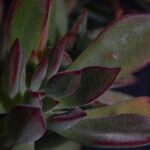 Explore Luxurious Velvet-Leaf Succulents for Your Garden
Explore Luxurious Velvet-Leaf Succulents for Your GardenTri color succulents are relatively easy to care for, making them suitable for both beginners and experienced plant enthusiasts. They thrive in well-draining soil and require indirect sunlight to maintain their vibrant colors. It's also important to avoid overwatering, as succulents are prone to root rot.
How to incorporate tri color succulents into your garden
- Plant them in well-draining soil
- Choose a sunny spot with indirect sunlight
- Create visually appealing arrangements by combining different tri color succulent varieties
- Consider using them as focal points in rock gardens or succulent containers
- Experiment with different combinations of tri color succulents to create unique color palettes
With their vibrant colors and unique foliage patterns, tri color succulents are sure to add a touch of beauty and intrigue to any garden or indoor space. Whether you're a seasoned plant lover or just starting your succulent collection, these captivating plants are definitely worth exploring.
Add a pop of color to your indoor or outdoor space with tri color succulent plants
Are you tired of the same old green succulents? If you're looking to add a vibrant touch to your home or garden, tri color succulents are the perfect choice. With their unique and eye-catching combination of colors, these plants will surely make a statement wherever they are placed.
Tri color succulents, as the name suggests, feature three distinct colors in their foliage. These plants are a result of careful breeding and hybridization, resulting in stunning combinations of greens, pinks, purples, yellows, and even blues. The contrasting colors create a captivating and dynamic look that will instantly grab attention.
Types of Tri Color Succulents
There are numerous varieties of tri color succulents available, each with its own unique blend of colors. Here are some popular choices:
- Echeveria 'Perle von Nürnberg': This succulent features pastel tones of lavender and pink, with a hint of blue. Its rosette-shaped leaves have a powdery coating, giving it an ethereal appearance.
- Aeonium 'Kiwi': With its vibrant mix of green, yellow, and pink, this succulent truly lives up to its name. The leaves have a spoon-shaped appearance, adding a whimsical touch to any space.
- Sedum adolphi 'Firestorm': This succulent has a fiery combination of green, red, and yellow. The edges of its leaves turn bright red when exposed to direct sunlight, adding a dramatic flair to your garden.
Care Tips for Tri Color Succulents
Tri color succulents may look unique, but their care requirements are similar to other succulent varieties. Here are some tips to keep them thriving:
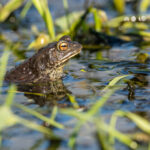 Unveiling the World of Succulent Plants and Their Unique Traits
Unveiling the World of Succulent Plants and Their Unique Traits- Light: Place your tri color succulents in a location where they can receive bright, indirect sunlight for at least six hours a day.
- Watering: Succulents are known for their ability to store water, so it's essential not to overwater them. Allow the soil to dry out completely between waterings.
- Soil: Use a well-draining soil mix specifically formulated for succulents. This will prevent waterlogging and ensure the roots stay healthy.
- Temperature: Tri color succulents thrive in temperatures between 60°F and 80°F (15°C and 27°C). Protect them from extreme cold or heat.
With their captivating colors and relatively easy care, tri color succulents are an excellent choice for both experienced and beginner plant enthusiasts. Whether you want to brighten up your living room, office, or garden, these unique plants are sure to impress. So why not add a touch of vibrancy to your space with these stunning succulents?
Experiment with different tri color succulent varieties to create visually stunning arrangements
Succulents are known for their unique and eye-catching colors, and tri color succulents take this appeal to a whole new level. These vibrant plants feature three distinct colors in their leaves, making them a must-have for any succulent enthusiast.
One of the most popular tri color succulent varieties is the Echeveria 'Perle Von Nurnberg.' This stunning plant showcases a beautiful combination of pastel pink, lavender, and powdery blue hues. Its rosette-shaped leaves add a touch of elegance to any arrangement, making it a favorite among succulent collectors.
If you're looking for a more dramatic option, consider the Sedum 'Tricolor.' This succulent boasts a mesmerizing blend of green, cream, and pink tones. Its leaves are often tinged with a rosy hue, adding a touch of warmth to its overall appearance. The Sedum 'Tricolor' is perfect for adding a pop of color to any indoor or outdoor garden.
For those who prefer a succulent with a bolder color palette, the Graptosedum 'California Sunset' is an excellent choice. This tri color succulent showcases a striking combination of red, orange, and yellow hues. Its leaves have a unique triangular shape, adding an intriguing visual element to any succulent collection.
How to Care for Tri Color Succulents
While tri color succulents are undeniably stunning, they require proper care to thrive and maintain their vibrant colors. Here are some essential care tips for these unique plants:
 Non-Cactus Succulents: A Guide to Other Succulent Varieties
Non-Cactus Succulents: A Guide to Other Succulent Varieties- Light: Tri color succulents prefer bright, indirect light. Place them near a window that receives partial sunlight, especially during the morning or late afternoon.
- Watering: It's crucial not to overwater tri color succulents. Allow the soil to dry out completely between waterings, and be cautious not to let water sit in the plant's rosette as it can lead to rot.
- Soil: Use a well-draining potting mix specifically formulated for succulents. This type of soil will prevent the plant's roots from sitting in excess moisture.
- Temperature: Tri color succulents thrive in temperatures between 60-80°F (15-27°C). Protect them from extreme heat or cold, as it can damage their delicate leaves.
By following these care guidelines, you can ensure that your tri color succulents remain healthy and vibrant for years to come. Experiment with different varieties, and let your creativity soar as you create visually stunning arrangements that will impress everyone who sees them.
Discover the beauty and diversity of tri color succulents from around the world
Tri color succulents are a captivating addition to any garden or indoor plant collection. These unique varieties feature leaves that display a stunning combination of three distinct colors, creating a vibrant and eye-catching appearance. From soft pastel hues to bold and contrasting shades, tri color succulents are a true spectacle of nature's artistry.
One of the most popular tri color succulents is the Echeveria 'Perle von Nürnberg'. With its rosette-shaped leaves, this succulent boasts a mesmerizing blend of lavender, pink, and silvery-gray tones. Its delicate coloring adds a touch of elegance to any space, making it a favorite among succulent enthusiasts.
Crassula ovata 'Tricolor' is another tri color succulent that deserves attention. This succulent features fleshy leaves that display a combination of green, cream, and pink hues. The contrasting colors create a striking visual effect, making it a perfect choice for adding a pop of color to your garden or indoor space.
For those seeking a more subtle tri color succulent, the Haworthia 'Attenuata 'Variegata' is an excellent option. This succulent showcases pale green leaves with white stripes, creating a delicate and refined appearance. Its compact size makes it ideal for small gardens or as a decorative element on a windowsill or desk.
Sempervivum 'Oddity' is a tri color succulent that stands out for its unique and captivating appearance. Its leaves form a rosette shape, with each leaf displaying a combination of green, red, and purple tones. This succulent's unusual coloration adds intrigue and a touch of whimsy to any garden or succulent arrangement.
When it comes to caring for tri color succulents, they generally require the same care as other succulent varieties. They thrive in well-draining soil and bright, indirect sunlight. It's important to avoid overwatering, as succulents are adapted to survive in arid conditions. Regularly check the moisture level of the soil and water only when it is dry.
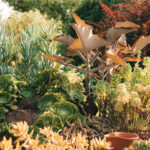 Discover the Enchanting Beauty of Ruffled Succulent Leaves
Discover the Enchanting Beauty of Ruffled Succulent LeavesTri color succulents are a delightful addition to any plant collection, offering a unique and vibrant touch to your indoor or outdoor space. Whether you prefer the soft and elegant hues or the bold and contrasting colors, these succulents are sure to capture your attention and add a touch of natural beauty to your surroundings.
Bring a touch of nature indoors with a tri color succulent as a houseplant
Tri color succulents are a popular choice for indoor houseplants due to their vibrant and unique appearance. These plants, also known as variegated succulents, are characterized by their leaves that display different colors, creating a striking and eye-catching display.
What makes tri color succulents so special?
Tri color succulents stand out from other houseplants because of their mesmerizing combination of colors. Each leaf showcases a blend of three distinct colors, often including shades of green, pink, red, purple, or yellow. This natural color variation is caused by a genetic mutation that affects the pigmentation in the leaves, resulting in a stunning and lively plant.
These succulents not only add a pop of color to your indoor space but also bring a sense of tranquility and calmness. Their unique patterns and hues create a visually appealing focal point, making them an ideal choice for those looking to add a touch of nature to their home or office.
Popular tri color succulent varieties
There are numerous tri color succulent varieties available, each with its own distinctive characteristics. Here are some of the most sought-after varieties:
- Echeveria 'Perle von Nurnberg': This popular variety features rosettes of fleshy leaves that display a stunning combination of lavender, pink, and green colors.
- Haworthia 'Truncata': Known for its compact size and unique triangular-shaped leaves, this succulent showcases a mixture of green, white, and translucent colors.
- Crassula 'Gollum Jade': With its tubular leaves that curl inward, this succulent exhibits shades of green, red, and yellow, adding a touch of whimsy to any space.
- Aeonium 'Kiwi': This variety features rosettes of green and yellow leaves with pink edges, creating a beautiful contrast of colors.
- Agave 'Kissho Kan': With its thick and spiky leaves that display a mix of green, yellow, and white colors, this succulent adds a touch of elegance to any room.
These are just a few examples of the vast array of tri color succulent varieties available. Whether you prefer a compact succulent or a larger statement piece, there is a tri color succulent out there that will suit your preferences and elevate your indoor space.
 Fast-Growing Succulents: Seed-Grown Varieties Revealed
Fast-Growing Succulents: Seed-Grown Varieties RevealedCaring for tri color succulents
Like other succulents, tri color succulents are relatively low-maintenance plants. Here are some essential care tips to keep in mind:
- Light: Tri color succulents thrive in bright, indirect sunlight. Place them near a window where they can receive ample light throughout the day.
- Watering: Succulents have unique water requirements. It is crucial to allow the soil to dry out completely between waterings to prevent root rot. Water sparingly, especially during the winter months.
- Soil: Use a well-draining soil mix specifically formulated for succulents to ensure proper drainage and prevent waterlogging.
- Temperature: Tri color succulents prefer warm temperatures ranging from 60°F (15°C) to 80°F (27°C). Avoid exposing them to extreme temperature fluctuations.
- Fertilization: Feed your tri color succulents with a balanced, water-soluble fertilizer formulated for succulents during the growing season to promote healthy growth.
By following these care guidelines, you can enjoy the beauty of your tri color succulents for years to come.
Tri color succulents are a fantastic addition to any indoor space, providing a vibrant and unique touch of nature. Their striking colors and patterns make them an excellent choice for both succulent enthusiasts and beginners alike. So, why not bring the beauty of tri color succulents into your home and enjoy the tranquility they bring?
Start a collection of tri color succulents for a striking and unique garden display
If you're looking to add some visual interest and unique charm to your garden, consider starting a collection of tri color succulents. These stunning plants feature vibrant leaves with three distinct colors, creating a mesmerizing display that is sure to catch the eye. Whether you're an experienced gardener or just starting out, tri color succulents are a wonderful addition to any outdoor space.
What are tri color succulents?
Tri color succulents are a type of succulent plant that have leaves with three different colors. These colors can vary widely, with combinations of green, red, purple, pink, and even yellow. The leaves of tri color succulents often have a gradient effect, with one color blending into another, creating a visually striking appearance.
 Exploring the Fascinating World of Tree-Like Succulent Plants
Exploring the Fascinating World of Tree-Like Succulent PlantsWhy choose tri color succulents?
Tri color succulents offer a unique and eye-catching element to any garden or indoor space. Their vibrant colors and intricate patterns make them stand out among other plants, adding a touch of whimsy and charm to your surroundings. Additionally, tri color succulents are relatively low-maintenance, making them perfect for both experienced gardeners and beginners.
Popular varieties of tri color succulents
There are numerous varieties of tri color succulents to choose from, each with its own unique combination of colors and patterns. Some popular varieties include:
- Echeveria 'Perle von Nurnberg': This variety features stunning rosettes with a combination of purple, pink, and blue-gray colors.
- Crassula ovata 'Tricolor': Also known as the Jade Plant, this variety has green leaves with red and yellow edges, creating a beautiful contrast.
- Sedum 'Firestorm': With its green leaves edged in vibrant red, this variety adds a splash of color to any garden.
Tips for growing tri color succulents
- Provide proper drainage: Like all succulents, tri color succulents require well-draining soil to prevent root rot. Be sure to plant them in a container with drainage holes or in a well-draining garden bed.
- Give them plenty of sunlight: Tri color succulents thrive in bright, indirect sunlight. Place them in a location where they can receive at least six hours of sunlight per day.
- Water sparingly: Overwatering can be detrimental to succulents. Allow the soil to dry out completely between waterings, and be cautious not to let water pool in the container.
- Protect from extreme temperatures: Tri color succulents are generally hardy, but they may need protection from extreme heat or cold. Consider moving them indoors during periods of extreme weather.
By adding tri color succulents to your garden, you'll create a vibrant and unique display that is sure to impress. Their stunning colors and low-maintenance nature make them an excellent choice for both experienced and novice gardeners. So, why not start your collection of tri color succulents today and enjoy their beauty for years to come?
Showcase your creativity by designing a succulent garden featuring tri color varieties
 Spiky Succulents: A Guide to Thorny and Spiky Types
Spiky Succulents: A Guide to Thorny and Spiky TypesTri color succulents are a stunning addition to any garden or indoor space. With their vibrant and unique color combinations, they are sure to catch the eye and add a pop of color to your surroundings. Whether you are a seasoned succulent enthusiast or just starting out, incorporating tri color varieties into your garden is a great way to showcase your creativity and create a visually appealing display.
Why Choose Tri Color Succulents?
Tri color succulents are known for their striking color patterns and variegation. Unlike traditional succulents that feature a single color, tri color varieties showcase a combination of three distinct colors. These colors often include shades of green, pink, purple, yellow, and even orange. The contrasting hues create a mesmerizing effect that adds depth and visual interest to your garden.
Popular Tri Color Succulent Varieties
If you are looking to incorporate tri color succulents into your garden, there are several popular varieties to choose from. Here are a few examples:
- 1. Echeveria 'Perle von Nürnberg': This stunning succulent features a rosette shape with pink, purple, and blue-grey leaves. It is a favorite among succulent enthusiasts for its unique color combination.
- 2. Sedum 'Golden Glow': With its yellow and green variegated leaves, this succulent adds a bright and cheerful touch to any garden. It is a low-growing variety that is perfect for ground cover or container planting.
- 3. Kalanchoe 'Panda Plant': This tri color succulent has thick, fuzzy leaves that display shades of green, grey, and brown. Its unique texture and color make it a standout in any succulent collection.
These are just a few examples of the many tri color succulent varieties available. Each one offers its own unique beauty and can be combined with other succulents to create a captivating display.
Tips for Growing Tri Color Succulents
While tri color succulents are visually stunning, they do require some special care to thrive. Here are a few tips to keep in mind:
- Provide Adequate Sunlight: Tri color succulents typically prefer bright, indirect sunlight. Place them near a window or in a location that receives partial sun for optimal growth.
- Water Sparingly: Succulents are known for their ability to store water in their leaves, so they do not require frequent watering. Allow the soil to dry out completely between waterings to prevent root rot.
- Use Well-Draining Soil: Succulents thrive in well-draining soil that allows excess water to escape. Consider using a cactus or succulent-specific potting mix for best results.
- Monitor Temperature: Tri color succulents generally prefer temperatures between 60-80°F (15-27°C). Avoid exposing them to extreme cold or heat, as it can damage their delicate leaves.
By following these simple care guidelines, you can enjoy the beauty of tri color succulents and create a thriving garden that will impress your friends and family.
Tri color succulents are a fantastic choice for adding a vibrant and unique touch to your garden. With their mesmerizing color combinations and distinct patterns, they are sure to become the focal point of any space. So, unleash your creativity and design a succulent garden that showcases the beauty of these stunning plants!
Frequently Asked Questions
1. What are Tri Color Succulents?
Tri Color Succulents are a type of succulent plant that exhibit three distinct colors on their leaves. These colors can include shades of green, pink, purple, red, or yellow.
2. How do Tri Color Succulents get their colors?
The colors in Tri Color Succulents are the result of pigments called anthocyanins, which are responsible for the vibrant hues. The intensity of the colors can vary depending on factors like sunlight, temperature, and stress levels.
3. How do I care for Tri Color Succulents?
Tri Color Succulents require similar care to other succulents. They thrive in well-draining soil, bright indirect sunlight, and infrequent watering. It's important to avoid overwatering, as it can lead to root rot.
4. Can I propagate Tri Color Succulents?
Yes, you can propagate Tri Color Succulents through stem or leaf cuttings. Simply let the cuttings dry for a few days, then place them in well-draining soil. With proper care, they will develop roots and grow into new plants.
If you want to read more articles similar to Discover the Most Vibrant and Unique Tri Color Succulent Varieties, you can visit the Varieties and Colors category.


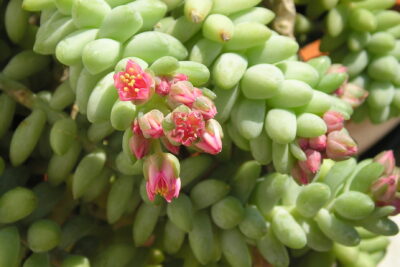


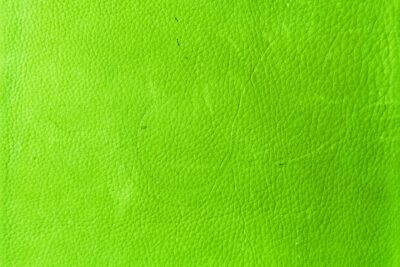
You Must Read